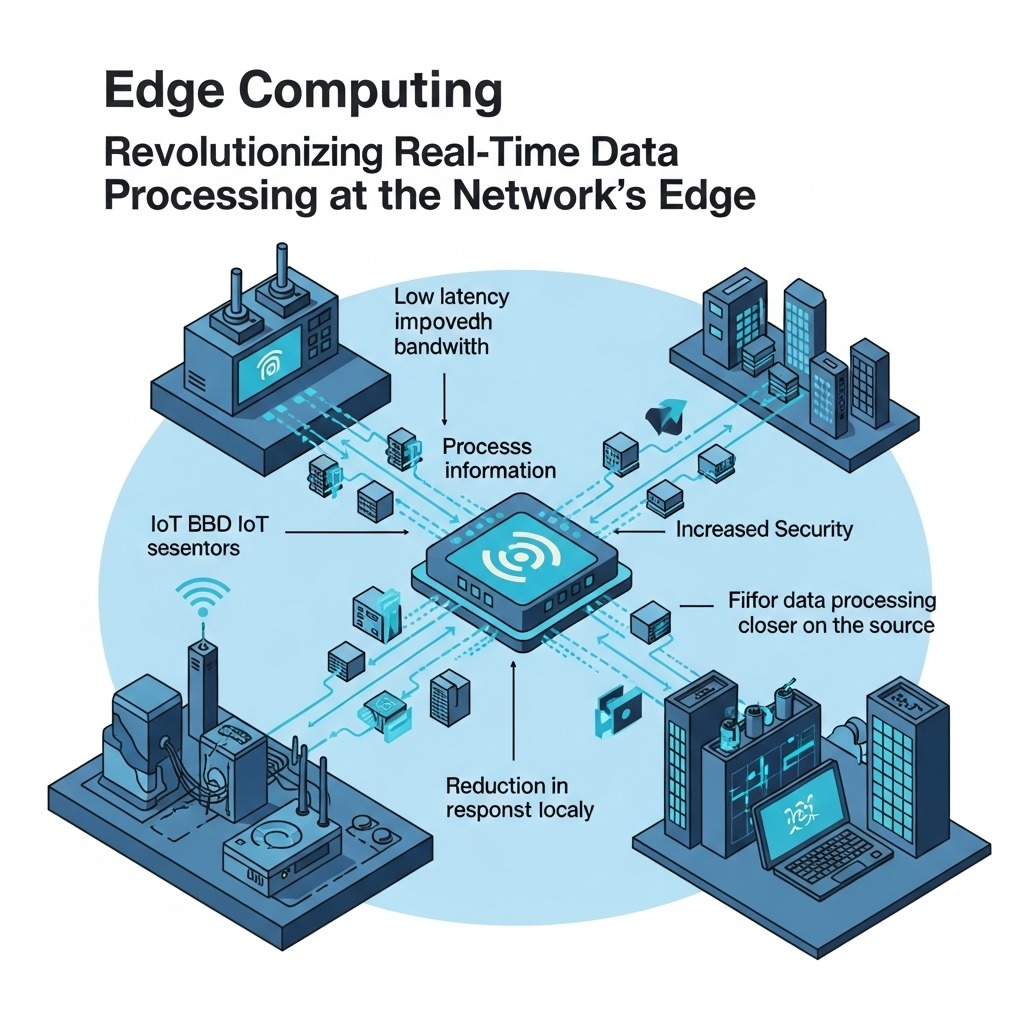In an era defined by rapid digital transformation, businesses and consumers alike generate staggering volumes of data every second. Traditional cloud computing architectures—where data is sent to centralized data centers for processing—have served us well, but they’re beginning to show limitations in latency, bandwidth consumption, and compliance. Enter edge computing, a decentralized approach that brings computation and storage closer to where data is generated: the “edge” of the network. By processing data locally, edge computing reduces latency, optimizes bandwidth usage, and enhances security, unlocking new opportunities across industries.
What Is Edge Computing?
Edge computing refers to a distributed IT architecture in which data processing occurs near the data source rather than in a centralized cloud. Edge devices can include anything from Internet of Things (IoT) sensors and smartphones to micro data centers and edge gateways. Instead of sending raw data long distances, these devices perform initial analytics or data cleansing on-site, transmitting only relevant or aggregated results to the cloud.
Why the Shift to the Edge?
- Reduced Latency
Many modern applications—from autonomous vehicles to augmented reality—require real-time responsiveness. Even millisecond delays can render a system ineffective or unsafe. Edge computing slashes round-trip times by handling critical tasks locally. - Bandwidth Optimization
Transmitting massive raw data streams to cloud servers is both costly and time-intensive. Local processing filters and compresses data, sending only essential insights upstream, thereby conserving network resources. - Improved Reliability
In environments with intermittent connectivity—such as offshore oil rigs or remote agricultural fields—edge devices can maintain core functions independently. They buffer data locally and synchronize with the cloud once the connection is restored. - Enhanced Security and Compliance
Sensitive data (e.g., patient health records or financial transactions) can be pre-processed at the edge to anonymize or encrypt information before transmission, reducing the risk of exposure. Additionally, local processing helps organizations meet data residency regulations by keeping data within geographic boundaries.
Key Technologies Enabling Edge Computing
- IoT Sensors and Actuators
Devices equipped with processing units can collect, analyze, and act on data in real time. - Edge Gateways and Micro Data Centers
These intermediate nodes aggregate data from multiple sensors or devices, performing more substantial computations before forwarding to the cloud. - 5G Connectivity
High-speed, low-latency 5G networks are accelerating edge deployment by offering reliable, high-bandwidth links between edge nodes and central servers. - Containerization and Orchestration
Technologies like Docker and Kubernetes allow edge applications to be packaged, deployed, and managed consistently across diverse hardware environments. - AI and Machine Learning at the Edge
Lightweight ML models are increasingly being run on edge devices, enabling intelligent data processing—such as anomaly detection or image recognition—without cloud dependency.
Industry Use Cases
- Autonomous Vehicles
Self-driving cars require instantaneous decision-making based on sensor inputs. Edge computing ensures critical computations—like obstacle detection—occur within milliseconds. - Smart Cities
Traffic management systems analyze video streams from street cameras in real time, adjusting signal timings to optimize flow and reduce congestion. - Healthcare
Wearable devices can monitor patient vitals continuously, alerting medical staff to anomalies without sending every data point to a central server. - Manufacturing
Industrial IoT platforms leverage edge analytics to detect equipment failures before they happen, minimizing downtime and maintenance costs. - Retail
In-store edge systems process video and transaction data locally to power cashier-less checkout experiences and dynamic pricing.
Challenges and Considerations
While the promise of edge computing is significant, organizations must navigate several challenges:
- Management Complexity
Deploying and maintaining a distributed network of edge nodes demands robust orchestration tools and skilled personnel. - Security Risks
Each edge device increases the potential attack surface. Implementing strong authentication, encryption, and regular patching is vital. - Data Consistency
Ensuring that local and cloud data remain in sync—and resolving conflicts when they arise—requires careful architectural planning. - Scalability
As edge deployments grow, organizations must balance hardware costs against the benefits of decentralized processing.
The Future of Edge Computing
Edge computing is poised to become an integral complement to cloud and hybrid architectures. As AI models grow more efficient and 5G coverage expands, the range of feasible edge applications will broaden. Gartner predicts that by 2027, 75% of enterprise data will be processed outside traditional data centers or clouds, up from just 10% in 2023. This shift heralds a new paradigm in which compute resources follow the data, rather than data following compute.
Ultimately, edge computing empowers organizations to innovate faster, respond in real time, and offer richer, more responsive experiences to users—ushering in an era of truly distributed intelligence.











